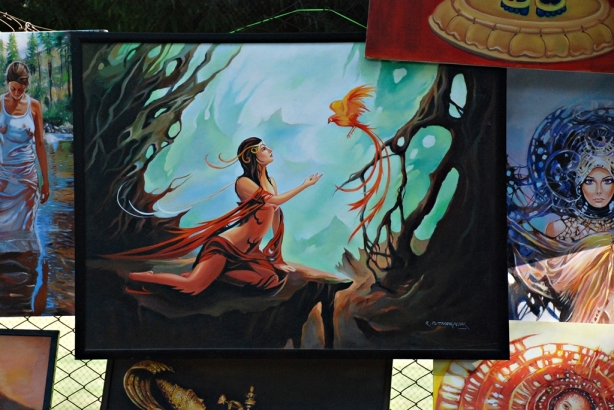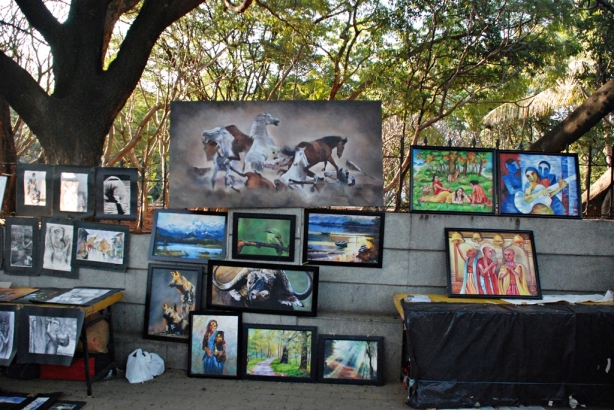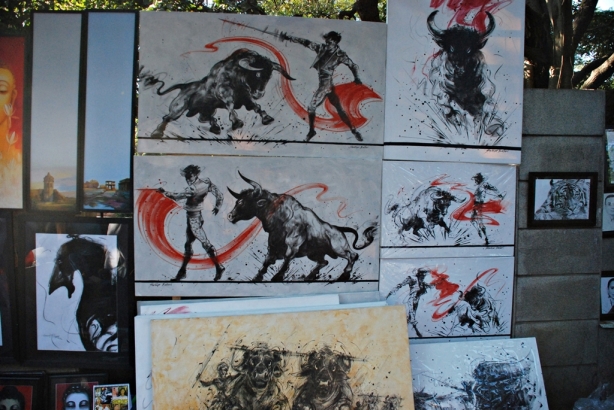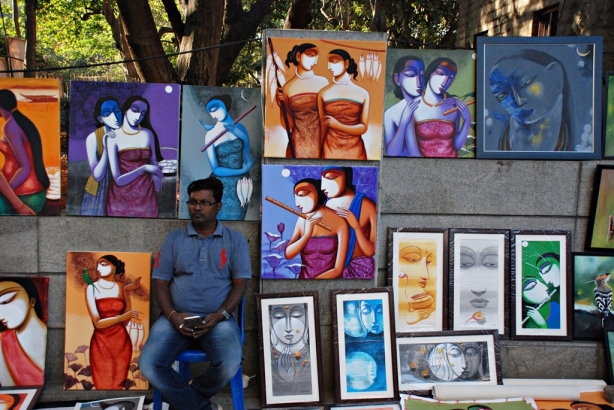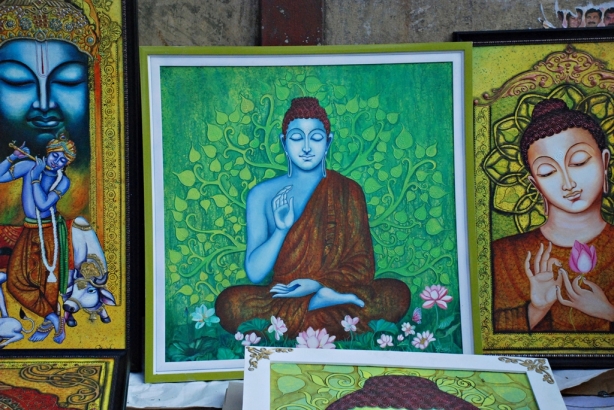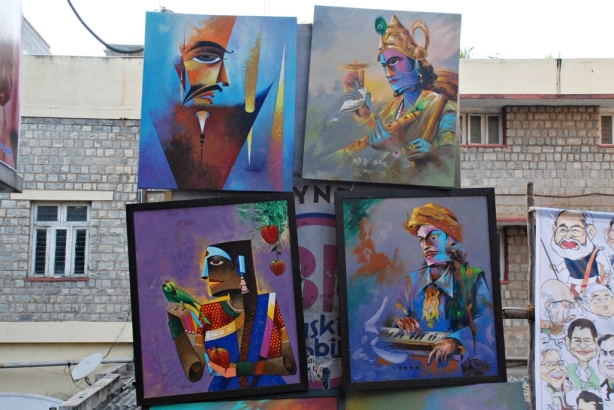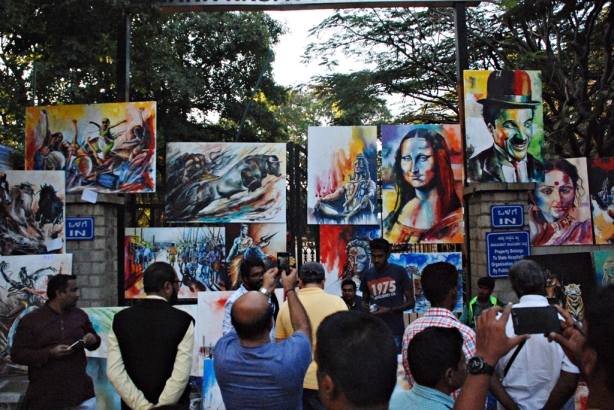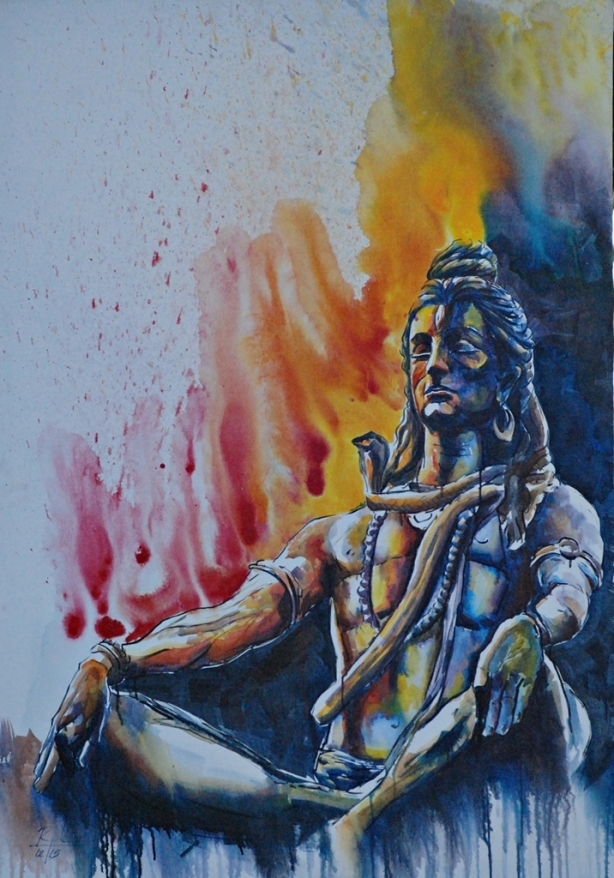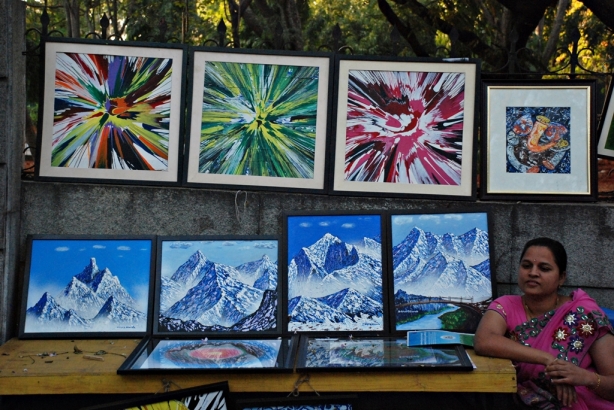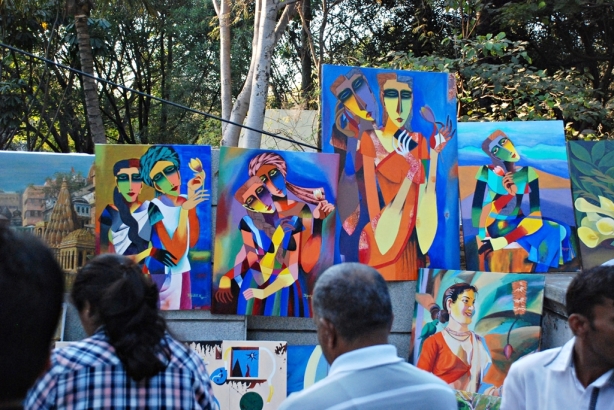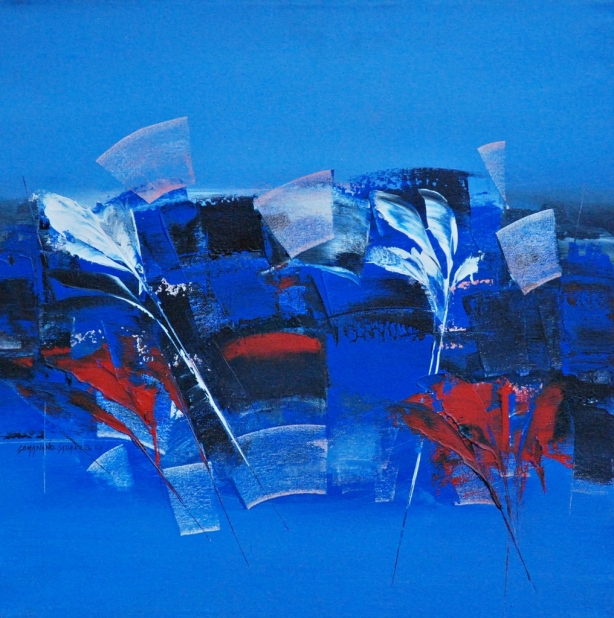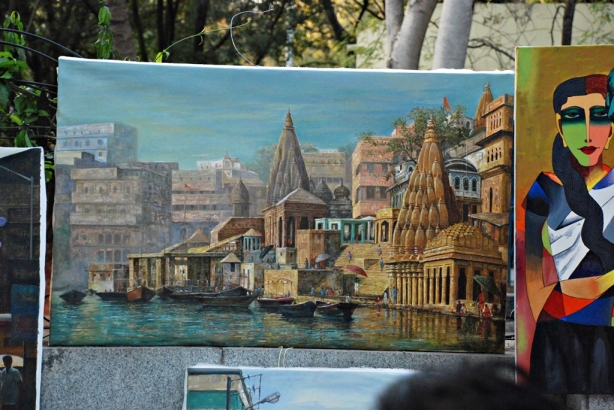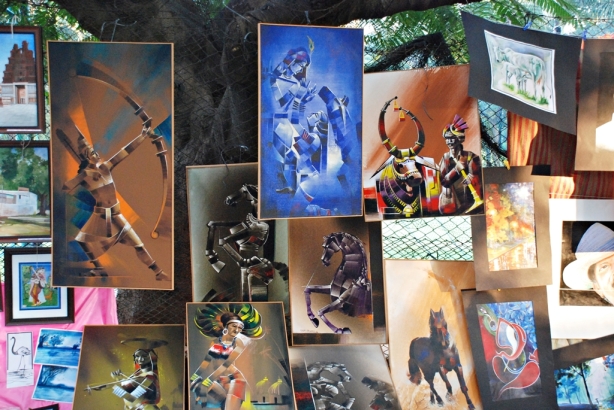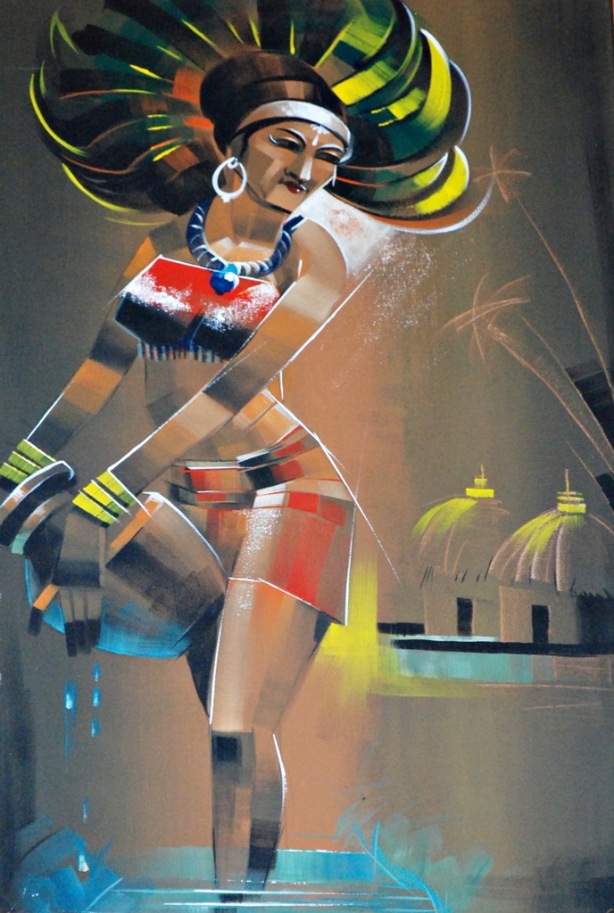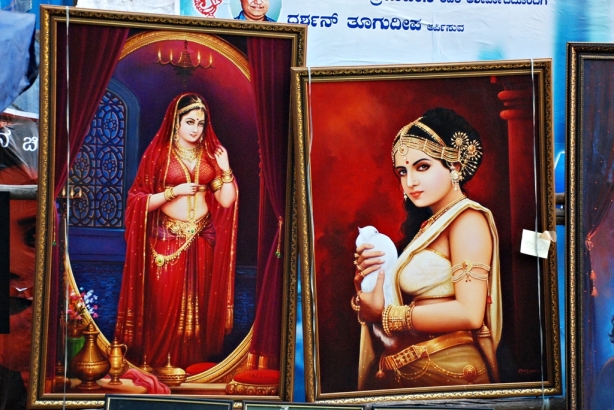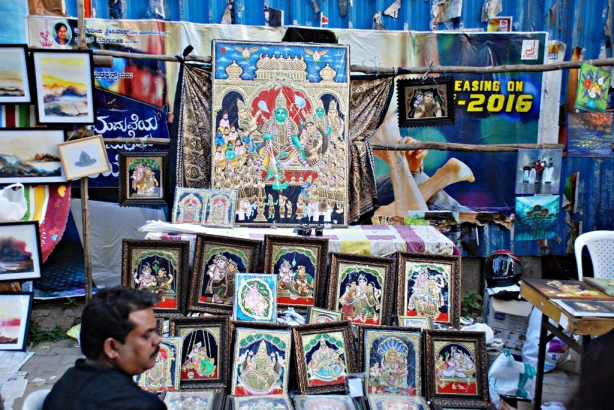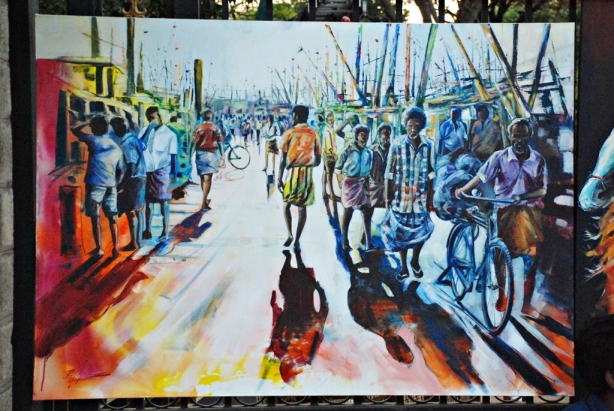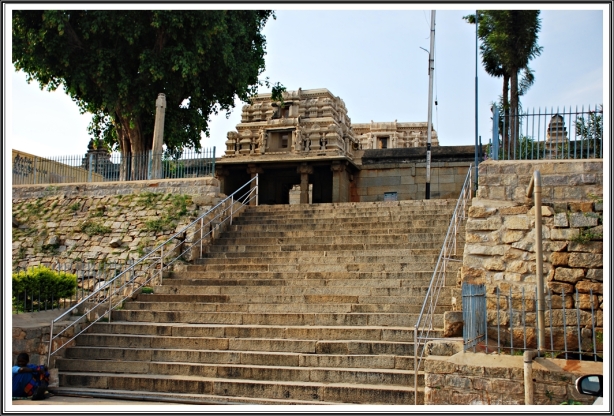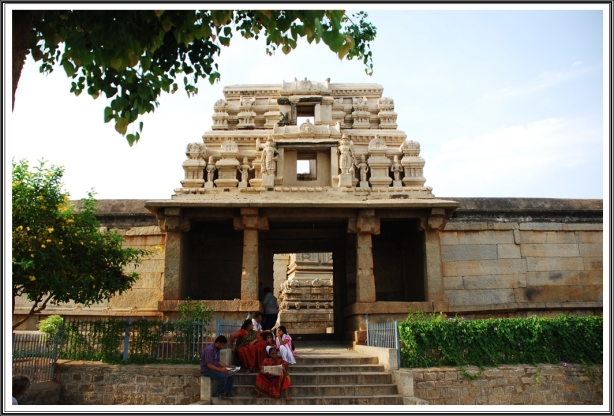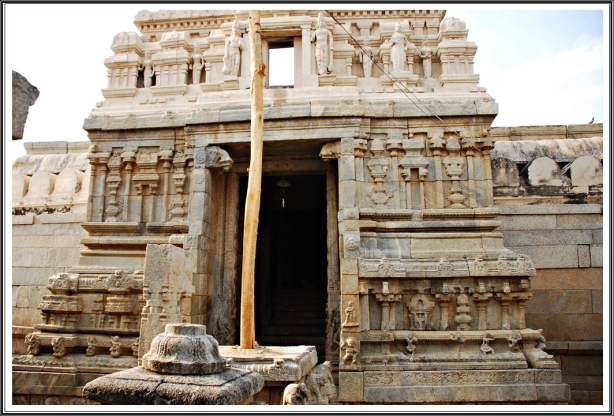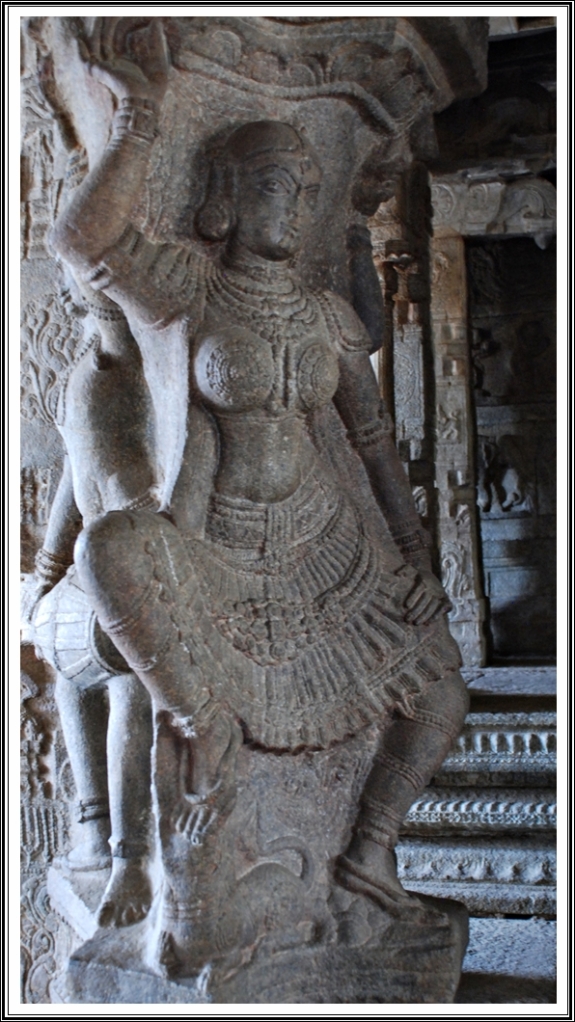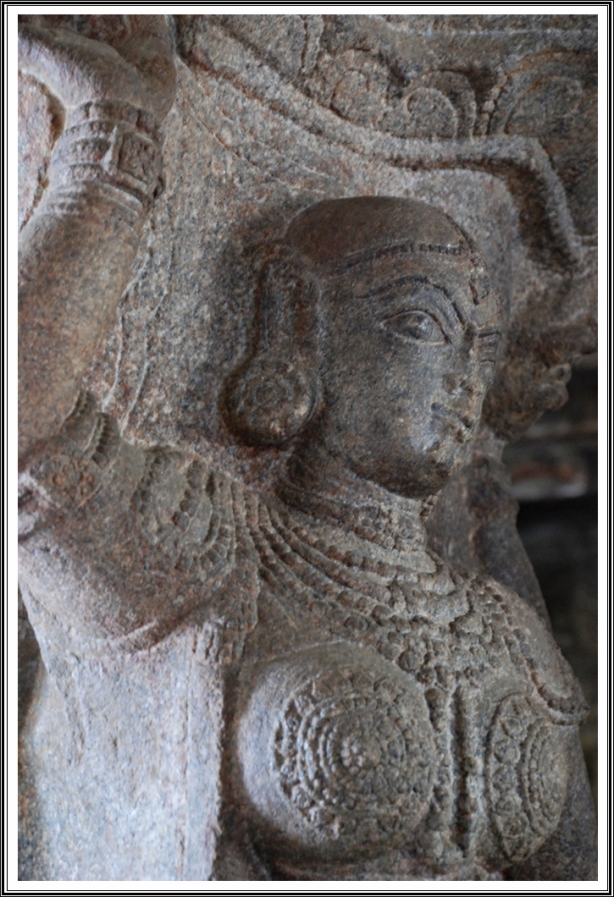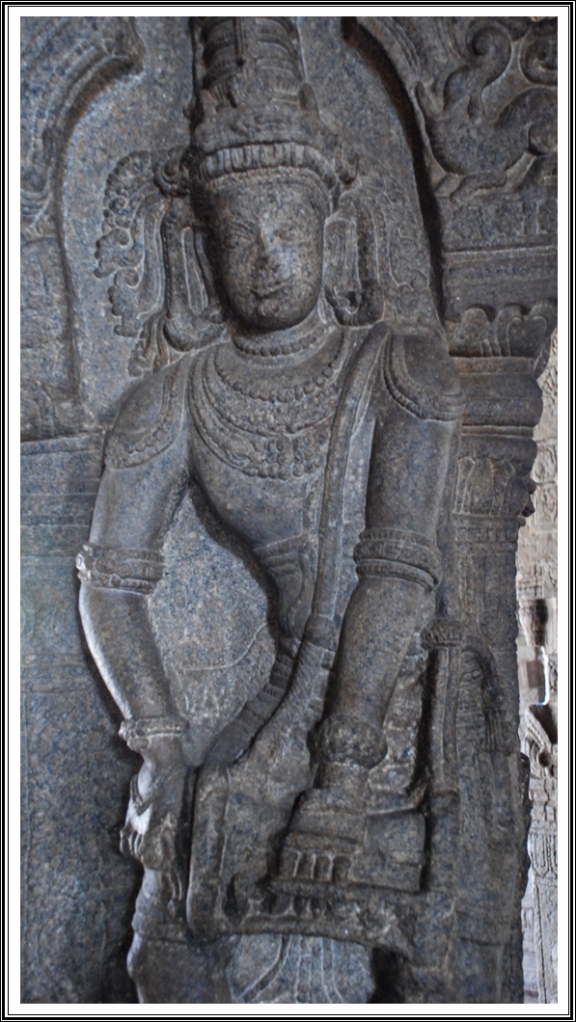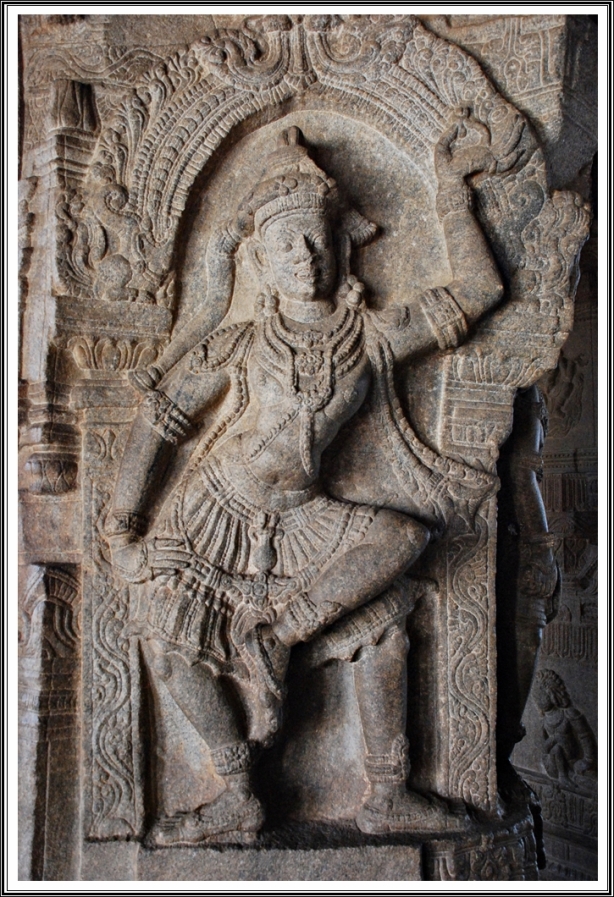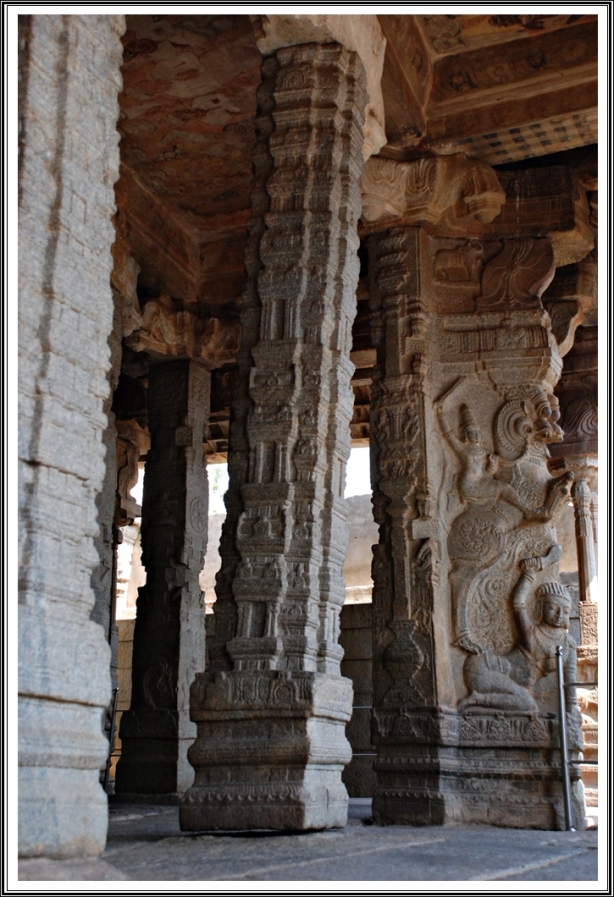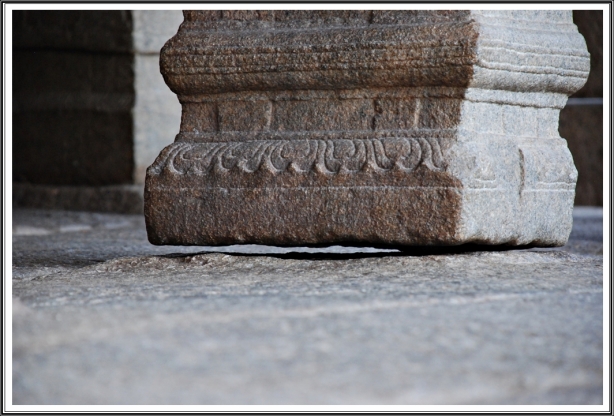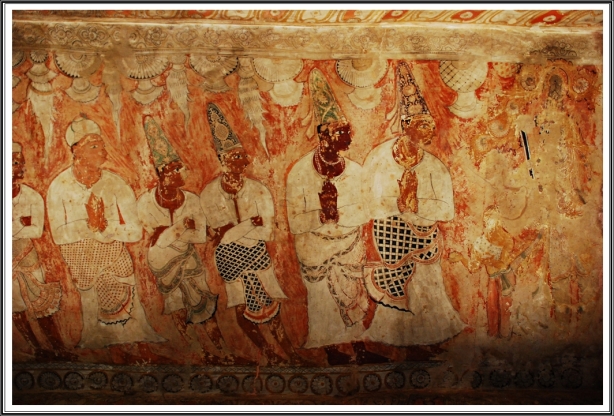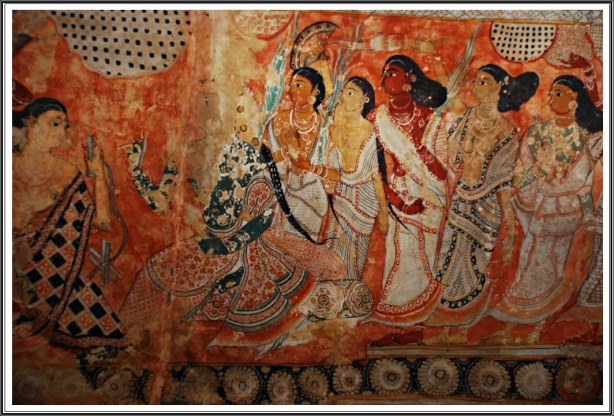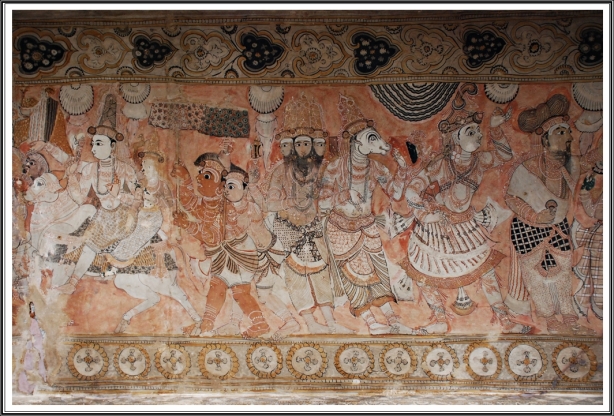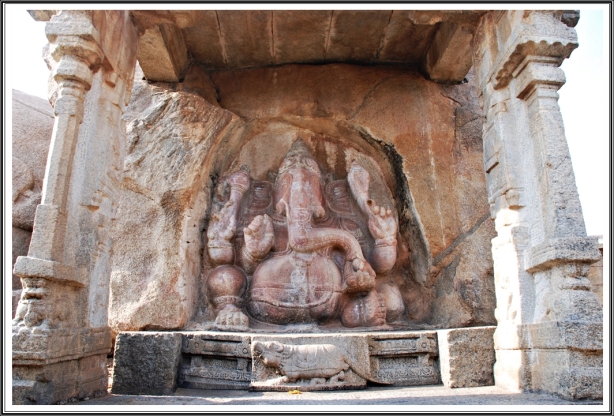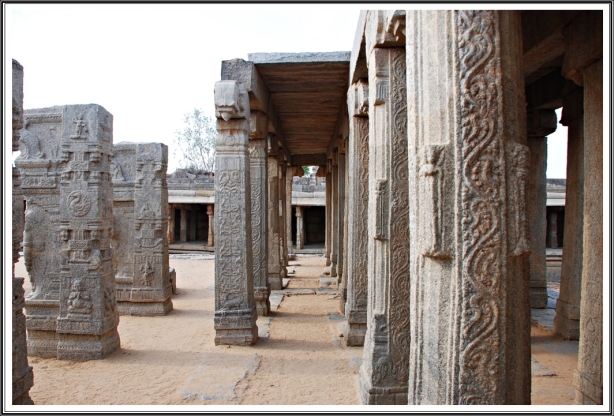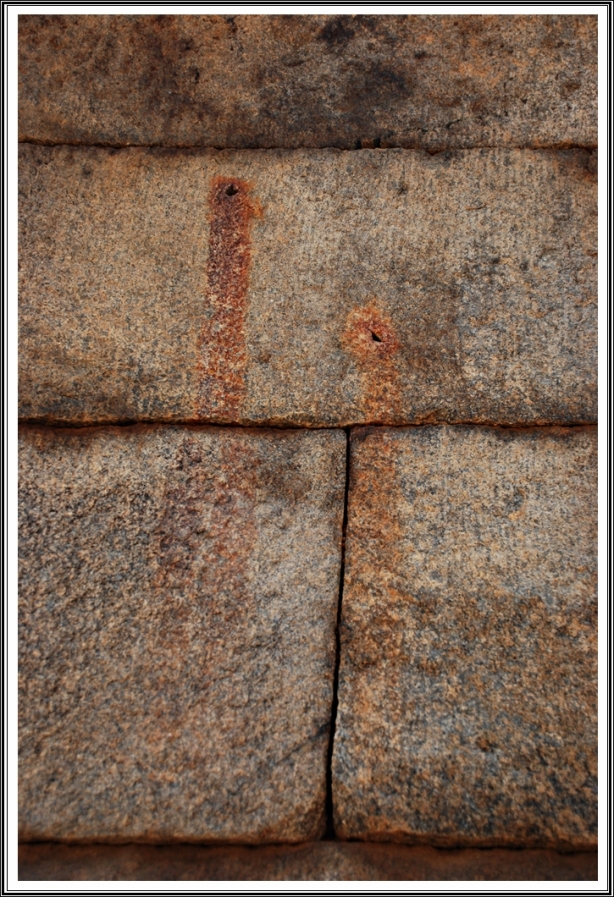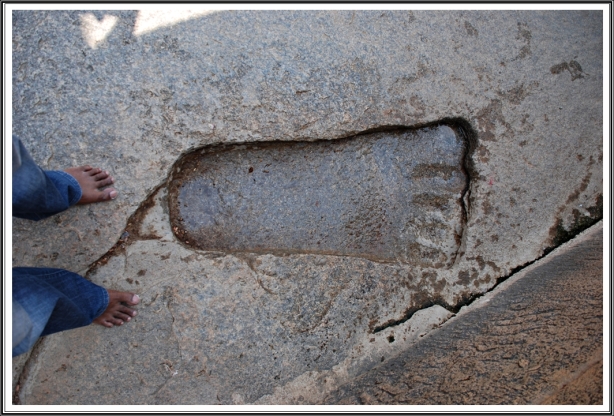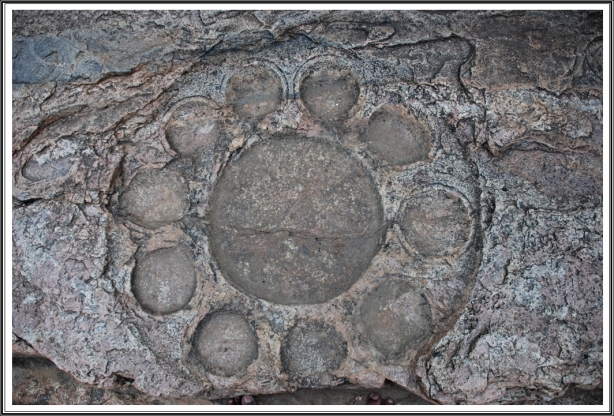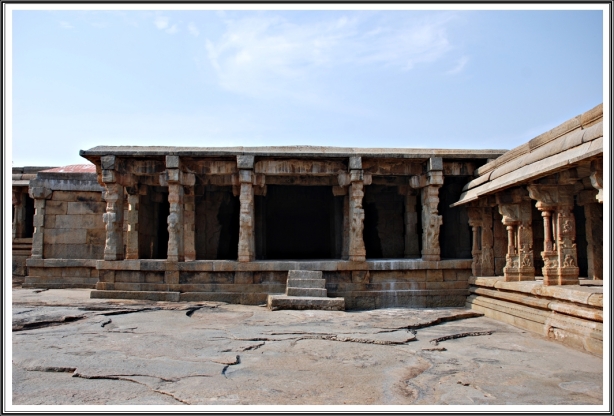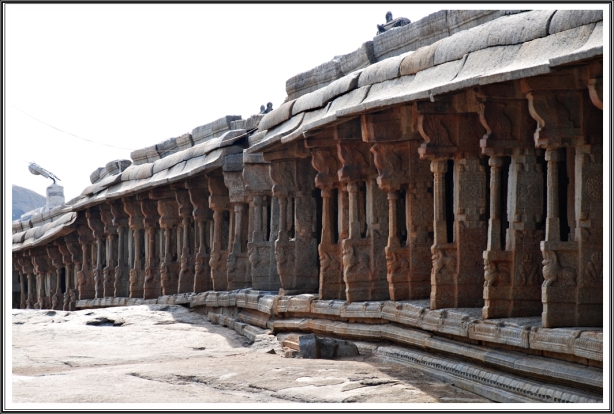Pattadakkal and Badami have been on my list of places to visit for a long time and after the unprecedented and completely unanticipated experience of the world shutting down, I thought a road trip was in order and set out from Bangalore on the afternoon of the first day in October. After a rather long drive that involved torrential rains and me losing my way, I eventually arrived at Badami. This is a very small town with limited options for accommodation and completely centred around the attractions such as the Cave Temples, Fort, Mahakuta Temple and Banashankari Temple.
Badami is located in Bagalkot district in Karnataka and was the capital of the Chalukya dynasty between the 6th and 8th centuries AD. It was known as Vatapi at that time and there are some inscriptions that show that King Pulakeshin-I made some fortifications on the hill nearby, in the 6th Century. Sandstone cliffs surround Badami on three sides and that is possibly why Chalukyas chose Badami as their capital and moved there from Aihole. The Chalukya empire was at its peak during the reign of King Pulakeshin-II and it extended from Kanchi (Tamil Nadu) to the banks of the Narmada river and from Orissa in the East to the West Coast. A guide told me that the classical song “Vatapi Ganaptim Bhaje” is connected with Vatapi (Badami) and an internet search (Wikipedia) confirmed that. Muthuswamy Dikshithar wrote this song and it is dedicated to the icon of Ganapati that the Pallavas brought from Vatapi after they defeated the Chalukyas in battle. Pulakeshin-II was killed in that battle.
Supposedly, the name Vatapi changed to Badami over the years because of the almond colour of the sandstone rocks that you find everywhere in Badami. Truly, these rocks are of a beautiful reddish-orange colour and stunning to behold.
I was mostly interested in the Cave Temple and the Fort and set out early in the morning to view the Cave Temple. I knew that early in the morning, light would not be enough for any photography inside the caves but my plan was to enjoy the caves in relative peace before the crowds started coming in (especially as it was the Dussehra holidays) and come back later for photography. That proved to be a wise decision as there were very few people in the Caves at that time and the ambience was so very charming and relaxing.
The caves have been carved out from a small hill and there are steps that lead up to the caves. There are basically four caves – the first one being dedicated to Shiva, caves two and three to Vishnu and the last one to Jain Theerthankaras. The Chalukyas were Vaishnavites but they constructed Shaiva and Jain temples as well.
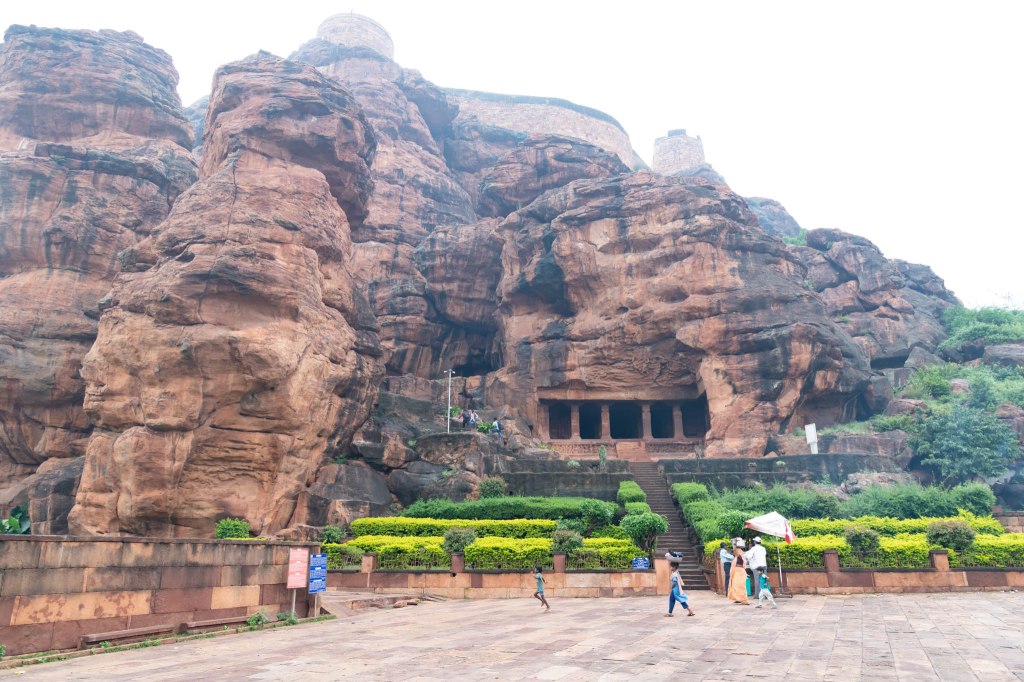
Right next to the Caves is a huge lake called Agastya Lake and this was probably the water source for the capital. The lake is named after Sage Agasthya and there is a myth that the lake was brought to Earth from the heavens by Garuda and hence the water has the power to cure illnesses and cleanse all sins. Wiki says that the lake is man-made and is from the 7th Century. The lake is used quite a lot by the citizens for their everyday life and I could see many people bathing and washing clothes. From the Caves, you get a beautiful view of the Bhoothnath Temple on the shores of the lake and the Fort on top of the hill.



After breakfast, I set out to visit the Fort and Bhoothnath Temple. Autorickshaws ply from the Cave Temple and they take you through very narrow roads inside the village to the foot of the hill and the lake. The surrounding areas of the Cave Temple and the lake are rather dirty with pigs roaming around everywhere. However, the Archaeological Society of India is doing a good job in maintaining the monuments themselves as they are all very clean.
My first stop was at the Bhoothnath Temple. There are two, one small one close to the hill and another a bit far away at one side of the lake. In reality, these are temple complexes as there is more than one temple in any given location. However, none of these temples are used for worship now and are maintained by ASI. This means that these temples don’t have the normal eye sores that you see in temples that have active worship, such as bright, glitzy boards, steel bars and such.
Bhoothnath Temple was quite deserted when I got there except for the guard that ASI had posted there. The temple is almost at water level and so, would definitely be flooded when water rises in the lake. There are three or four small temples in this complex and the carvings on the walls are intricate and amazing. There are some carvings done on the surrounding rocks as well. The colour of the rocks add to the beauty of the temples and with the designs used, they are just mesmerising.






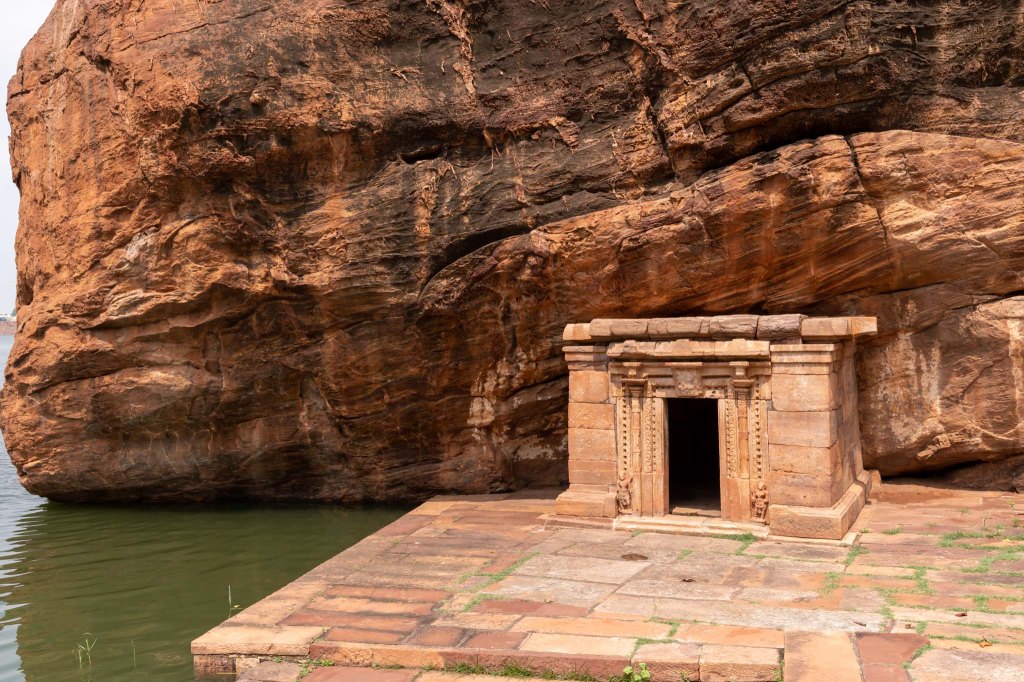
Behind the temple, the rocks rise up and there is a nice waterfall flowing down from the top. I am sure it would look majestic when there is enough water.

Next stop was the Fort. This was the abode of the Chalukyas and was built in 542 AD. It was destroyed by the Pallavas when they defeated the Chalukyas in battle. When Badami came under the rule of Tipu Sultan, he rebuilt some of the fortifications. You can walk up the hill using a paved pathway that has many steps. It is not a difficult climb at all and as I mentioned earlier, ASI has maintained it quite well. There are not many buildings left standing and the two important ones are two temples – Lower Shivalaya and Upper Shivalaya. The idol of Vatapi Ganapati was originally located in Lower Shivalaya before the Pallavas carried it away.


Lower Shivalaya


Upper Shivalaya

Granary on top of the hill
There are some doorways along the path and it is very evident that the fort could be defended very easily by a handful of soldiers, given the structure of the pathway. The time eroded rocks on both sides add significantly to the experience.




On the top there is a round structure that had cannons installed for defence. Given the style of the architecture, I guess this must have been constructed during the time of Tipu Sultan. At the top of the hill, very near to Upper Shivalaya, there is a Durgah that has the tomb of Sayyid Hazrat Badshah (I couldn’t find out who this person was).


By this time, it was past noon and I headed back to the Cave Temple. After the fall of the Chalukyas, Badami came under the Deccan Sultanate and later Tipu Sultan and there are some evidences of Muslim rule, such as the Durgah mentioned above. Yet another is the charming Markaj Jumma mosque, built by Tipu Sultan, that is right next to the Cave Temple and hosts the tomb of Abdul Malik Aziz, a governor of Badami.


As is often the case with Archaeological sites in India, one will not be able to understand any detail about the caves if one doesn’t engage a guide. Sure, there are some small boards put up outside but those don’t have enough information and are often quite confusing. This is a real pity as most people do not or cannot engage a guide and so miss out many of the wonders and these sites are often so rich in history and culture. It would be great if the ASI can introduce a relatively cheap method like audio guides so that people can immerse themselves into the great experience that these amazing sites can provide. Since I knew that a guide is more or less mandatory if one were to try and get some understanding about the caves, I engaged one. Of course, these guides do also add some “interesting” bits from their side as well and I have often heard the same sight being explained in two different ways by two different guides; all the more reason for audio guides!
All the four caves have been carved out of rock and there are no joints anywhere in any of the pillars or statues. In other words, nothing has been worked upon outside and then brought here and fixed. It is assumed that each cave might have taken 12-15 years to finish. Data is available only about the third cave, which is the most ornate, as there is an inscription on one of the pillars in it. This cave took 12 years to finish, from AD 576 to 588. The first cave that was excavated was Cave-1 and then Cave-2 and so on.
By the time I got back, there were a lot of people visiting the caves, as can be seen from the photo below, which shows the façade of the first cave. This cave is dedicated to Lord Shiva.


Dancing Shiva statue with eighteen arms with Ganesha and Nandi shown nearby

Dwarapalaka

Harihara – Vishnu and Shiva coming together, with symbols of Shiva shown on the right side of the statue (such as Nandi) and those of Vishnu on the left side

Mahishasuramarddini

Statue of Ardhanaareeshwara with Sage Bhrigu (the skeleton like figure) and Nandi shown on the side of Shiva and a female consort on the side of Parvati. The guide told me that Bhrigu had become skeleton like after he was cursed by Parvati but that was not how I remembered the story and internet too confirmed that it was Lakshmi who cursed Bhrigu to be doomed to poverty. According to the puranas, Bhrigu had set out to find who among the three gods – Brahma, Shiva and Vishnu – was the greatest and when he arrived at Kailasa, Nandi did not let him enter as Shiva was busy making love to Parvati at that time. The enraged sage cursed Shiva that he would only be worshipped as a Lingam (phallus) along with a Yoni to depict Parvati. Perhaps, it is this story that the sculptor wanted to convey through this work. This story about Bhrigu is quite interesting and once again points to the richness of the Puranas which often did not follow any hierarchy with Sages being superior to Gods themselves, at times, while the Sages spent their lives worshipping those Gods. They provide so many such sly entry points to paths that lead to the questions on what is supposedly the main theme.

Adisesha shown with five heads in the ceiling of Cave-1
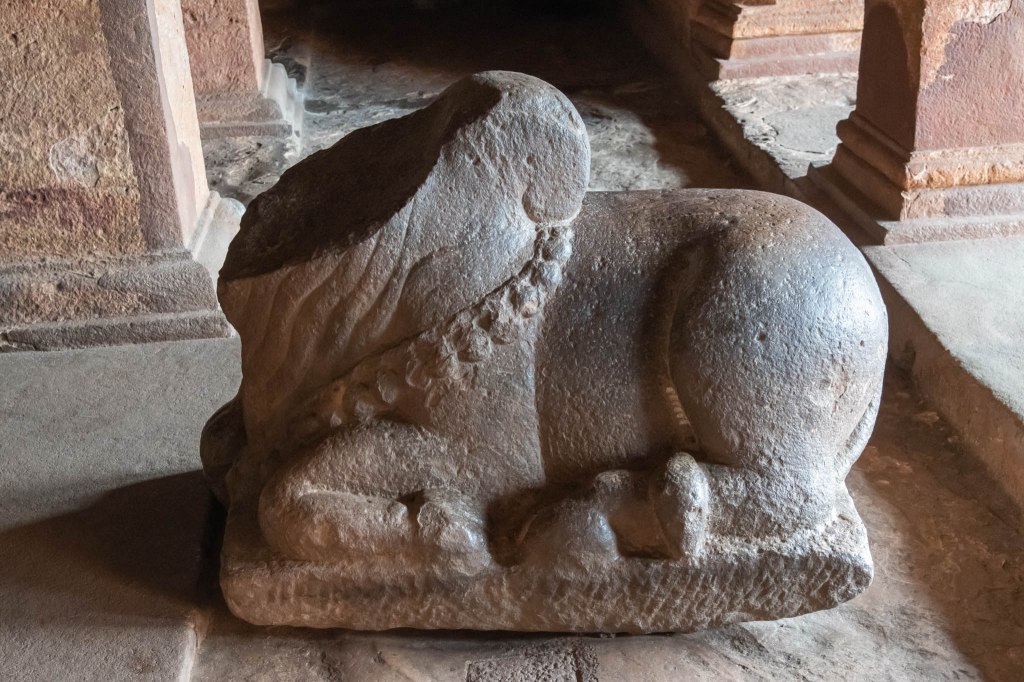
This Nandi has been brought from outside and is the only structure in the caves that has not been carved out of the rock and is free standing

Shivalinga in the sanctum sanctorum of Cave-1; however there is no worship in the temple
A climb up a small set of steps takes one to Cave-2, which is dedicated to Lord Vishnu.


Statue of Trivikrama is seen at the entrance to the cave and Vamana can be seen holding an umbrella. There is intricate work in the ceiling with a design of four swastikas joined together in a never ending pattern and also a circle with twelve fishes in it. One can only marvel at the effort and care that must have been put in, to carve these out of rock. One mistake and the piece would go bad and there was no opportunity to replace the piece as everything was carved out and nothing was joined. There is no idol in the sanctum santorum of this cave and same is the case in Cave-3 as well.



Cave-3 is also a few steps away from Cave-2 and this is the cave with the most intricate carvings and its history is fairly well documented because of the inscription mentioned earlier.


It seems that most of the sculptures were painted in the olden times but almost all of the colour has been lost. They must have used vegetable dyes and this must be why the colours were lost over time. In cave 3, we can see some notches on the floor and the guide said this was the palette for mixing the paint but I am not too sure. Currently you can see some colour only on one small section of the ceiling in Cave-3.


Remnants of paint on the ceiling

Trivikrama statue in Cave-3

Eight armed statue of Vishnu as dwarapalaka
There are two very large, beautiful statues at each end of the corridor as we enter the cave; that of Vishnu seated on Seshnag (Anantha) and of Prasanna Narasimha at the other end. Supposedly, the pose of Vishnu sitting down on Anantha is very unique as he is normally shown as reclining on the coils of the snake.


Vishnu seated on the serpent Anantha


Prasanna Narasimha
The quality of the work in this cave can be seen from the fantastic designs on pillars and also from the beauty of the statues. Some of the statues are carved out like stays to the ceiling on top of the pillars and you can see hollowed out spaces as well. They had even carved out some work on the inside of the awning of this cave as well. One can only marvel at the patience and the dedication of these sculptors. Each of these caves took more than 10-12 years to complete and I wondered at what would have been the motivation of kings to support this work over such a long period; especially when you consider that average lifespan at that time must have been around 50 years or so. Maybe it was a desire to leave something for posterity to remember them by.


Ornate designs on pillars


Work on the awning
There is also one statue that is a kind of social commentary. Here a couple is shown in an inebriated state, particularly the lady. She has had too much to drink, her dress is falling off and she is vomiting, with a dog eating the vomit. This statue has been kind of damaged a bit and so I thought the guide was making the story up till I went to Aihole and heard the very same story from another guide there and saw the same work on a pillar inside a temple; that one is much clearer and the story is quite evident. This just goes to show that women drinking alcohol was common in ancient India and it is indeed strange and comical that the self-declared custodians of Indian culture are completely scandalised if they hear of any woman having a drink in modern India. I had read somewhere that what these fellows are peddling as Indian moral values are actually Victorian values and morality and I am inclined to believe that, given their general ignorance and biased interpretation of history.

There is also a statue which plays a trick with the angle of view. When you look at the statue from one side, it is that of a dwarf.

The same statue when viewed from an angle behind the dwarf, looks like a monkey with the earpiece of the dwarf resembling the snout of the monkey.

The last stop was Cave-4, which is kind of separate from the three caves. It seems that in olden times, a wall separated this cave from Cave-3. It is almost unfinished and there is not much by way of intricate designs here though there are some large statues.


Statue of Bahubli

Status of the twenty third Thirthankara

Idol of Mahaveera, the twenty fourth (last) Thirthankara, in the sanctum sanctorum
I spent more than four hours at the cave, walking to and fro and gawking at all the work. The interiors of the caves were generally plain and most of the work was in the corridors. The beauty of Badami cannot be described in words, at the very least I am quite incapable of it. I was very glad of my initial visit early in the morning as it provided me an opportunity to immerse myself into the ambience without all the disturbance from large numbers of tourists that appeared after lunch. I would definitely recommend Badami and one should spend at least a day here, just to visit the Caves and the Fort. There are also other attractions like Mahakuta Temple and Banashankari Temple. I did go to Mahakuta Temple and that is quite nice too but it is no match to the wonders of the Caves.


